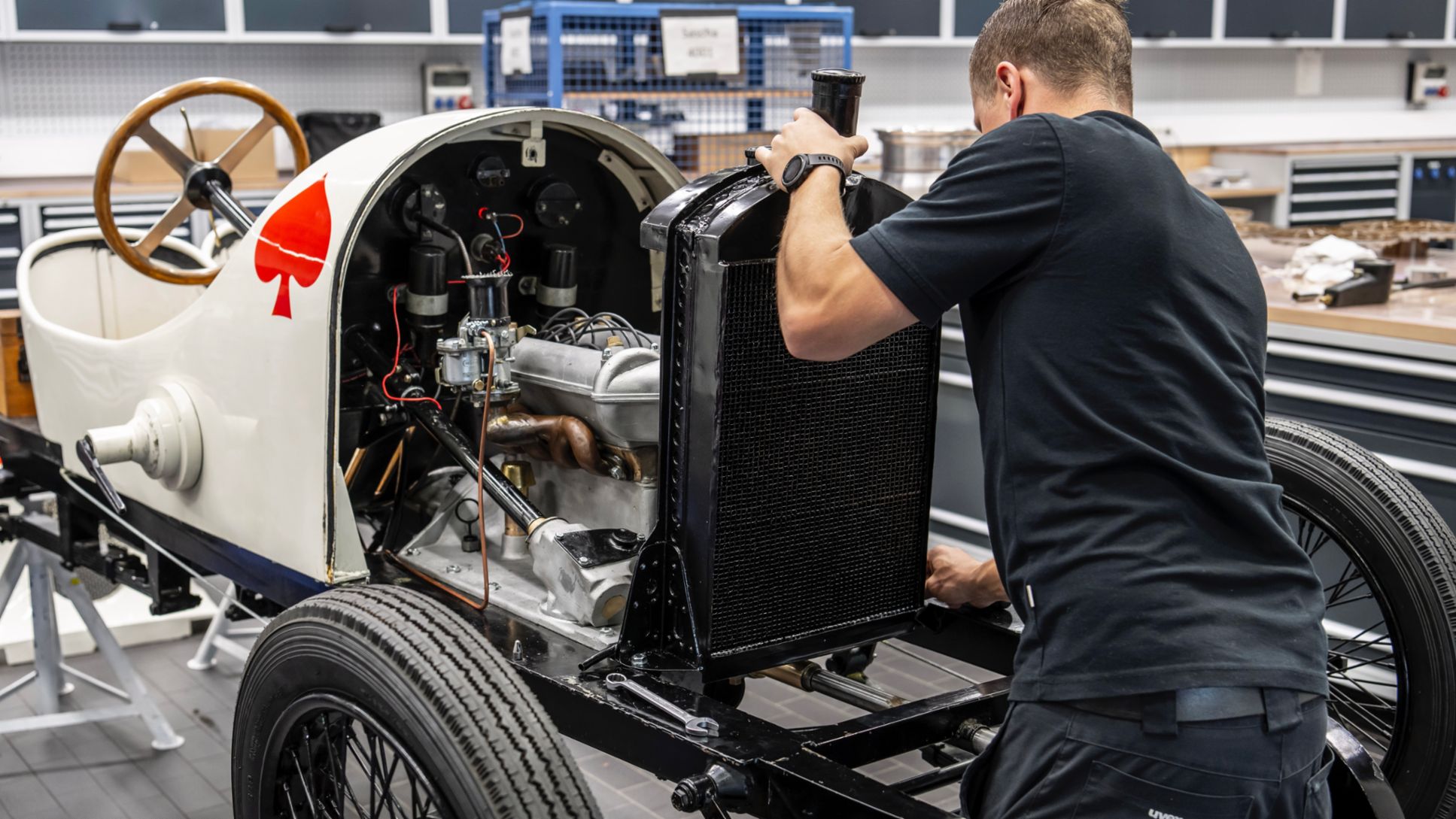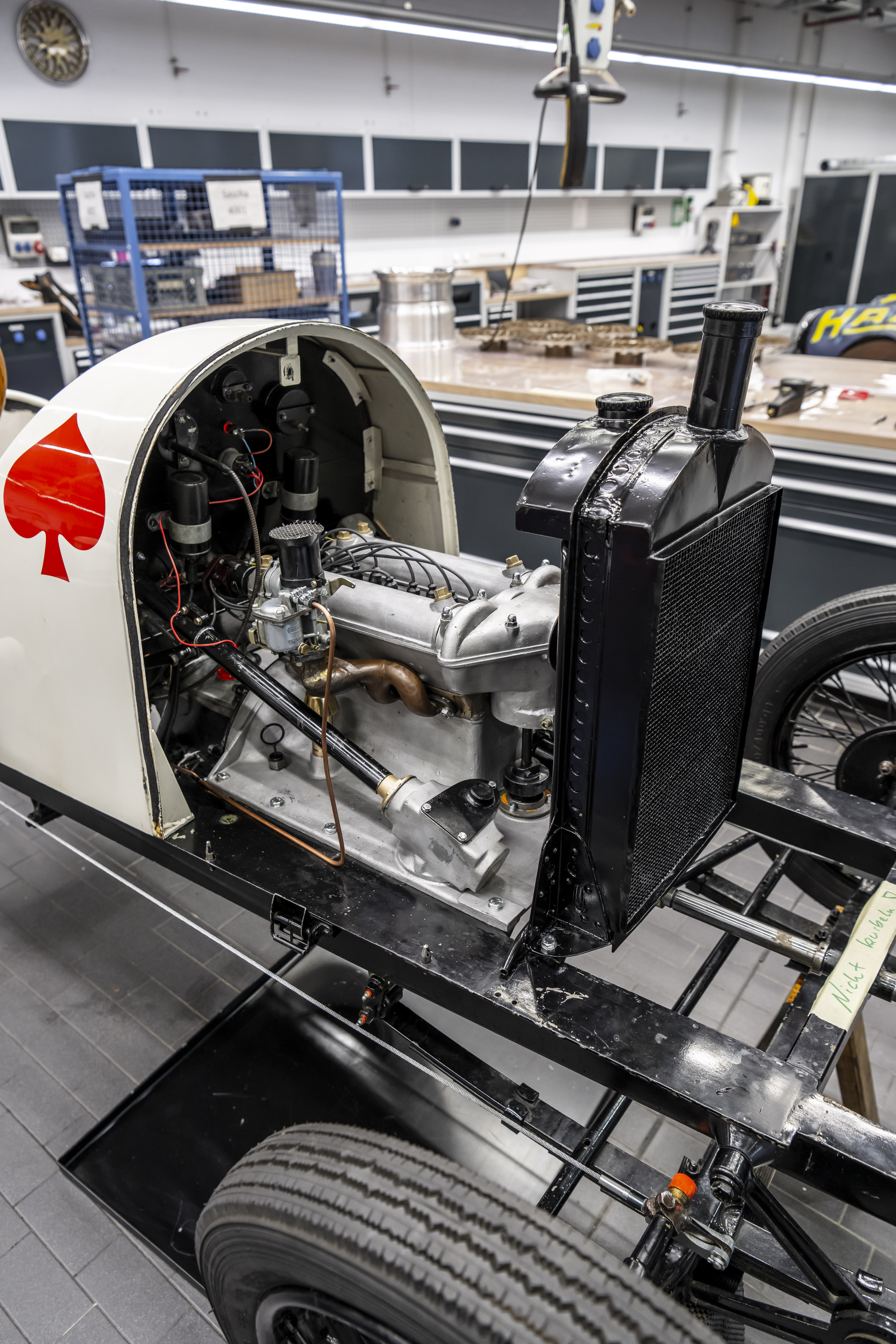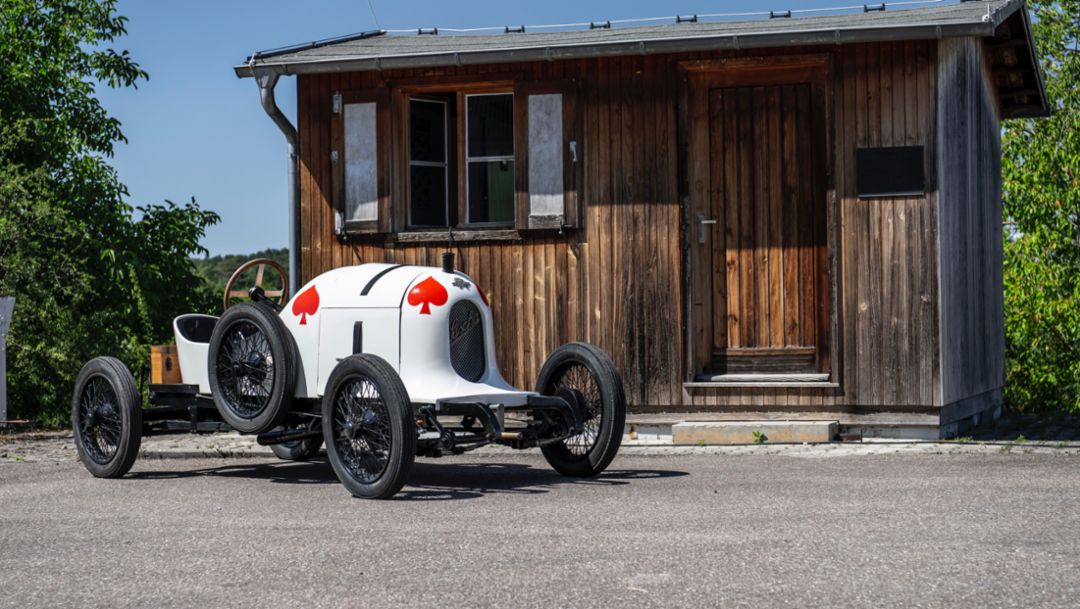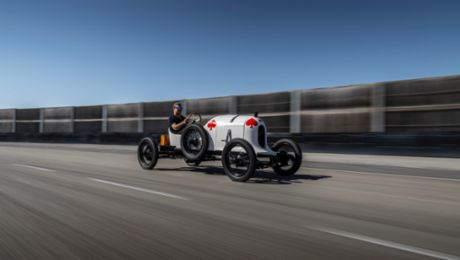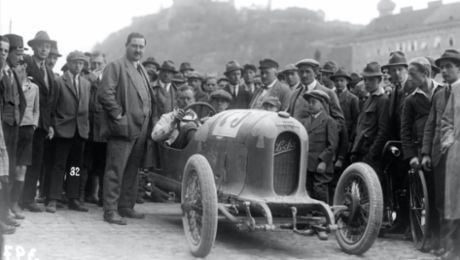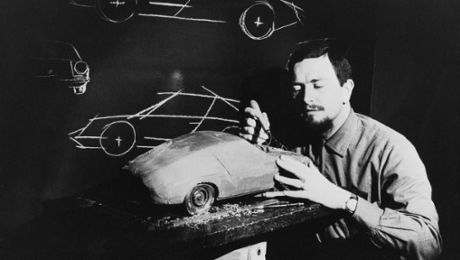The vehicle had been part of the exhibition at the Porsche Museum for many years before restoration work began. A small brass plate on the dashboard indicates that the racing car was last restored in Porsche’s training workshop in June 1975.
“We did some research and found out that the car came into the shop at the end of the 1950s and was repaired there in a contemporary way,” says Kuno Werner, supervisor at the Porsche Museum, who is in charge of the project. Back in 2021, he and his team set themselves the goal of restoring the Sascha in time for the 100th anniversary of its very first class win. “Our aspiration was to reconstruct the star of the Targa Florio in a way that is worthy of historic preservation and make it road worthy,” says Werner. “To rebuild the Sascha from scratch was out of the question since so much of it was no longer original.”
Before the start of the restoration, Werner was given the opportunity to pay a visit to Sascha’s sister car in Hamburg, which is in almost original condition and painted red. The Sascha from the exhibition was also red until 1975, at which point the workshop staff painted it white. Back at the Porsche Museum, Werner pored over old notes in the company archive. There, in the memory bank of Porsche, the sports car manufacturer keeps important documents that are helpful as historical evidence when working on old vehicles. For example, Werner learned that the vehicle stood on a farm for years after all the racing and was, to a degree, scavenged for parts.
After an initial test run of a few metres, it turned out that the engine was leaking. “The more parts we dismantled, the clearer it became that we needed a proper foundation. After all, you don’t build a house on sand,” says Werner, explaining the decision to have the engine overhauled by an expert in pre-war engine construction. The key here was to understand what modifications had been made in past decades. “Overhauling the cylinders and fitting them into the original housing was a particularly exciting phase for everyone,” says Werner.
Restoration of the oldest vehicle at the Porsche Museum
At that point, Werner handed over the restoration of the oldest vehicle at the Porsche Museum to his youngest employee for the next six months. Jan Heidak, a technician at the museum, got right down to work with the engine builder. “I like preserving technical, cultural heritage,” says the 28-year-old. He sought out former technicians, now pensioners, who were familiar with the engineering practices of yesteryear and were happy to share their insights.
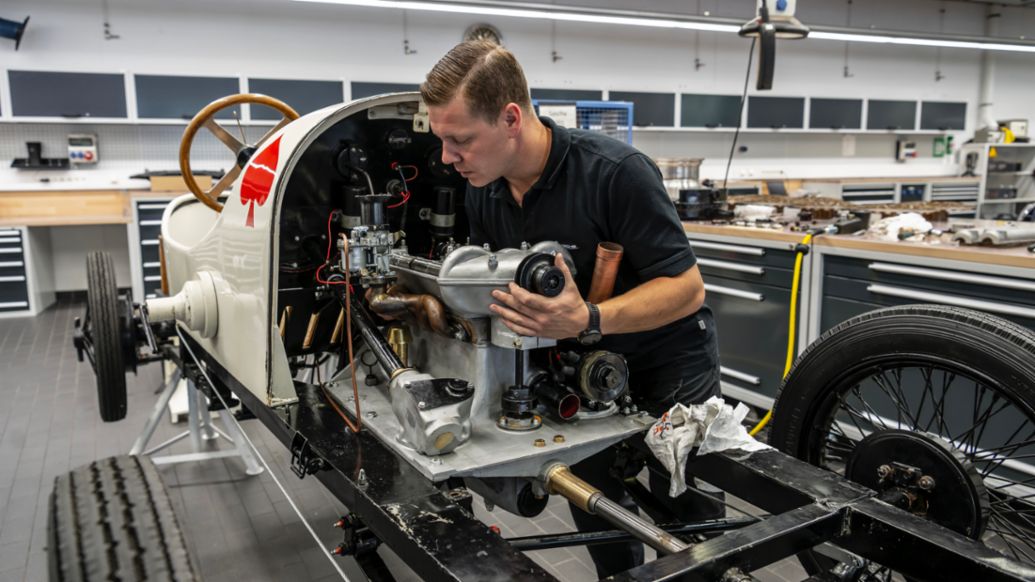
In its quest to keep historical technology alive, the Porsche Museum sees it as its special duty to ensure the transfer of knowledge to the next generation. For half a year, the team dedicated its attention to the rigid axle suspension, the brakes and the engine. The character of the four-cylinder engine with its 68.3 mm bore and 75.0 mm stroke was soon defined: it had to be responsive and sporty. The Austro-Daimler ADS R, after all, contained many of the genes that would later become the foundation of Porsche. First and foremost, lightweight construction.
